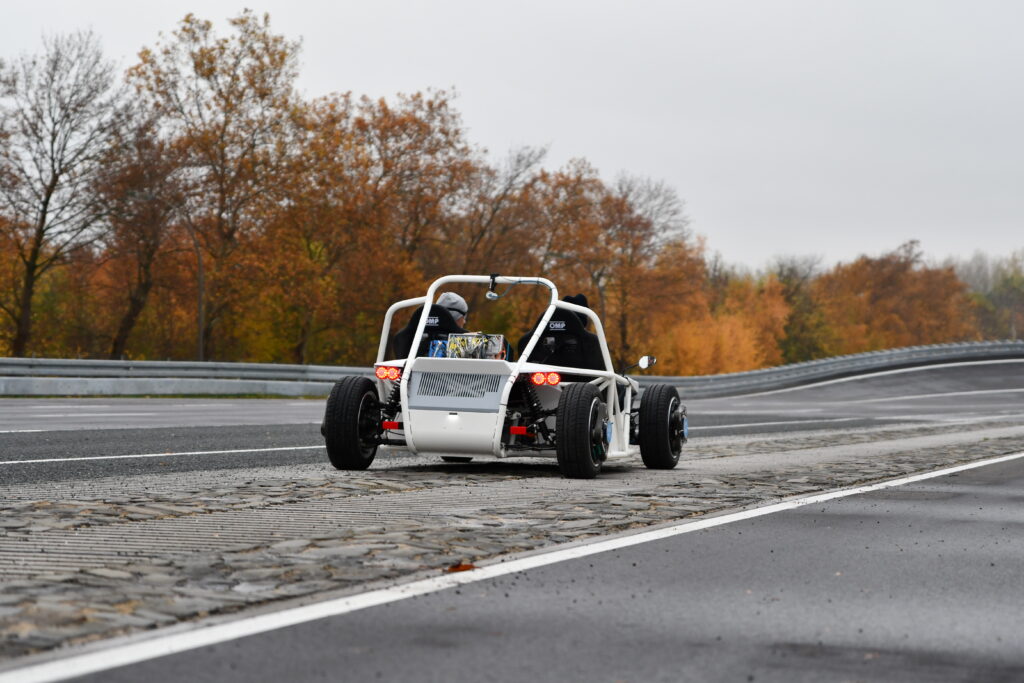Eric Sorber, business development automotive NVH testing at Siemens Digital Industries Software, presents a new component characterization technique for better road noise engineering measurements
What is the basis for Siemens’ new methodology for characterizing tires and suspensions?
Our methodology provides direct answers to three well-known automotive industry trends: electrification, diversification and digitalization. The basic premise is this: first, every component of a vehicle is characterized independently using abstract descriptive data such as blocked forces spectra or impedance transfer functions at the connection interfaces. Next, virtual vehicle prototypes are assembled and their NVH performance predicted by mathematically coupling component data.
At the upcoming Automotive Testing Expo Europe, Siemens Digital Industries Software will present the application of this methodology on a road noise prediction case study; electrification has catapulted road noise to the position of dominant noise source in EVs today. The methodology can also be applied to other noise sources that remain important in EVs, such as electric drive units, HVAC compressors, electric power steering systems, etc.
In what other applications could the technique be used?
A second use case is to handle the diversification of today’s vehicles in a scalable way. As most vehicles are now developed on shared platforms, test-based validation of a component design in all possible vehicle configurations is no longer feasible. Virtual prototypes solve this problem by replacing the physical assembly with mathematical operations, which can realistically still be repeated for each possible configuration whenever a component design change occurs.
Finally, we see that vehicle development processes are being digitalized at an increasing rate, meaning that engineering decisions increasingly rely on predictive CAE-based data in an effort to make development processes more efficient in terms of both time and cost. This fits naturally with the concept of virtual prototypes as well, since the input data required (load spectra, transfer functions) can be generated using either test- or CAE-based methods depending on the appropriate stage of development. The road noise prediction case study explores this idea by applying a test-based characterization of the tires to a fully CAE-based vehicle body characterization.
Why is this method superior?
Virtual prototypes require each component to be characterized independently. For test-based characterization methods this means freely suspending the component when measuring impedance transfer functions at the connection interfaces, for example. However, in the context of road noise, such boundary conditions do not always result in realistic component behavior. For example, in the vehicle the suspension system is pre-loaded by the vehicle weight and micro-vibrations help overcome stick-slip phenomena in the dampers, both of which influence the impedance transfer functions but neither can be applied in freely suspended conditions.
What sets our methodology apart is that we have found ways to independently characterize components under realistic boundary conditions to maximize the predictive accuracy of the virtual prototype. It has taken us the past several years and many road noise characterization projects to distill our insights on what does and does not work into a structured and cohesive workflow.
 What did you learn when developing this technique?
What did you learn when developing this technique?
A key realization we had is that component characterization is not just about being smart in how you process the data. Test bench design, measurement techniques and hardware all play an incredibly important role in determining the quality of your characterization. When it comes to data sets for making NVH predictions, data quality should be to the absolute highest standards – higher than anything we are familiar with for ‘classic’ applications such as modal analysis or transfer path analysis. Or as the old saying goes: garbage in is garbage out.
Eric Sorber, business development automotive NVH testing at Siemens Digital Industries Software, will discuss the methodology at the free-to-attend Technology Presentation Stage at Automotive Testing Expo Europe 2023 on Tuesday, June 13 – Hall 10 at 11:10.
To see the full Technology Presentation Stage program, please click here. To book your free entry pass, please click here.


